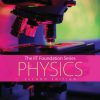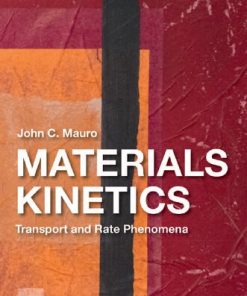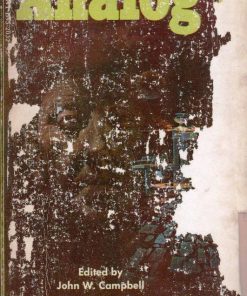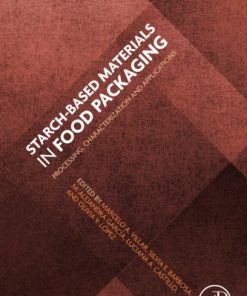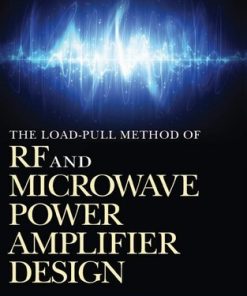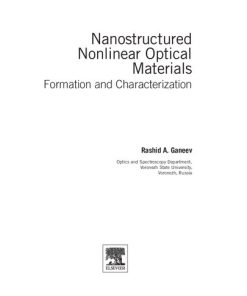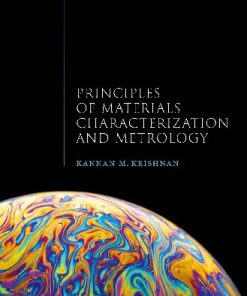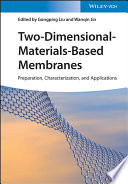(Ebook PDF) Wideband Microwave Materials Characterization 1st edition by John Schultz 1630819476 9781630819477 full chapters
$50.00 Original price was: $50.00.$25.00Current price is: $25.00.
Wideband Microwave Materials Characterization 1st edition by John W. Schultz – Ebook PDF Instant Download/DeliveryISBN: 1630819476, 9781630819477
Full dowload Wideband Microwave Materials Characterization 1st edition after payment.
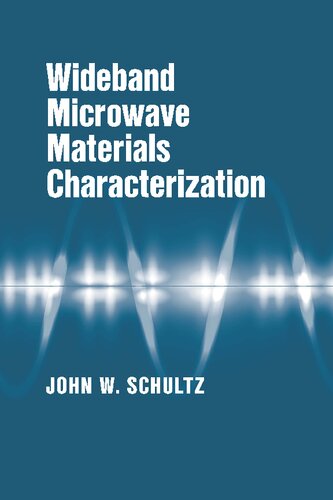
Product details:
ISBN-10 : 1630819476
ISBN-13 : 9781630819477
Author: John W. Schultz
Determining intrinsic microwave properties or extrinsic performance of materials is important for a variety of applications, including wireless propagation, antenna and microwave circuit design, and remote sensing, among others. This practical engineering guide to microwave material measurements discusses both laboratory and manufacturing/field environments. Modern technology has created a need to adapt microwave measurement methods for in-line quality assurance, in-situ process control, and field inspection of materials and components. Various configurations for free-space measurements are covered, as well as guidance on calibration methods, signal processing, and intrinsic property inversion algorithms. You will learn how the modern adaptation of impedance analysis to CEM inversion methods and how this powerful new technique can be used to significantly improve conventional measurement methods. Intended to inform engineers and scientists of the theory and practice of wide-band microwave characterization of materials, this guide provides the necessary theory and equations for implementing these methods and gives hints and techniques for their practical implementation.
Wideband Microwave Materials Characterization 1st Table of contents:
1 Introduction to Electromagnetic Materials Properties
1.1 Dielectric Properties
1.2 Magnetic Properties
1.3 Dispersion
1.4 Anisotropy
1.5 Engineered Materials
1.6 Chapter 1 References
2 Free Space Methods
2.1 Historical Perspective
2.2 Calibration
2.2.1 One-Parameter Calibration
2.2.2 Four-Parameter Calibration
2.3 Time Domain Processing
2.4 Inverting Intrinsic Properties
2.4.1 Microwave Network Analysis
2.4.2 Nicolson-Ross-Weir (NRW) Algorithm
2.4.3 Iterative Algorithm – S11 or S21
2.4.4 Iterative Algorithm – S11 and S21
2.4.5 Iterative Algorithm – Shorted S11
2.4.6 Iterative Algorithm – Shorted S11 and S21
2.4.7 Iterative Algorithm – 4-Parameter
2.4.8 Inverting Sheet Impedance
2.5 Advanced Material Inversions
2.5.1 N-Layer Inversion
2.5.2 Two-Thickness Inversion
2.5.3 Model-Based Inversion
2.6 Absorber Characterization
2.7 Chapter 2 References
3 Microwave Non-Destructive Evaluation
3.1 Sensors / Antennas
3.2 Dealing with RF Cables
3.3 Thickness Inversions
3.4 Thickness and Property Inversion
3.5 Defect Detection
3.6 Chapter 3 References
4 Focused Beam Methods
4.1 Focused Beam System Design
4.1.1 Gaussian Beam Basics
4.1.2 Lens Design
4.1.3 ABCD Matrix Design
4.1.4 Lens System Construction
4.2 Focused Beam Measurement Examples
4.2.1 Dielectric Measurements
4.2.2 Magneto-Dielectric Measurements
4.3 Measurement Uncertainties
4.3.1 Transmission Line Errors
4.3.2 Focusing Error
4.3.3 Beam Shift Error
4.3.4 Specimen Position
4.3.5 Other Errors: Network Analyzer & Specimen
4.4 Apertures
4.5 Chapter 4 References
5 Transmission Line Methods
5.1 Waveguides
5.1.1 Waveguide Calibration
5.1.2 Waveguide Property Inversion
5.1.3 Waveguide Air Gap Correction
5.2 Coaxial Air Lines
5.2.1 Coaxial Calibration and Material Inversion
5.2.2 Air Gap Corrections in Coaxial Airlines
5.2.3 Wrapped Coaxial Airline Method
5.2.4 Square Coaxial Airline
5.3 Stripline Methods
5.4 Other Transmission Line Methods
5.5 Chapter 5 References
6 Scatter and Surface Waves
6.1 Diffuse Scatter
6.1.1 Radar Cross Section
6.1.2 Scattering Coefficient Measurement
6.1.3 Examples of Scattering Coefficient Measurement
6.1.4 Echo Width Measurement
6.1.5 Examples of Echo Width Measurement
6.1.6 Cross Polarized Scatter
6.2 Near-Field Probe Measurements
6.3 Surface Traveling Wave
6.3.1 Surface Wave Attenuation
6.3.2 Surface Wave Attenuation Measurement
6.3.3 Surface Wave Backscatter
6.3.4 Chapter 6 References
7 CEM-Based Methods
7.1 Computational Electromagnetic Modeling
7.2 CEM Inversion of Broadband Materials
7.3 CEM Inversion Example: RF Capacitor
7.3.1 RF Capacitor Design
7.3.2 RF Capacitor Uncertainty
7.3.3 Example Measurements
7.4 CEM Inversion Example: Non-Destructive Measurement Probes
7.4.1 Epsilon Measurement Probe
7.4.2 Mu Measurement Probe
7.5 CEM Inversion Example: Slotted Rectangular Coaxial Line
7.6 Chapter 7 References
8 Impedance Analysis and Related Methods
8.1 Impedance Analysis
8.2 Dielectric Spectroscopy
8.2.1 Dielectric Parameters
8.2.2 Electrode Fixtures
8.2.3 Error Sources
8.3 Dielectric Spectroscopy Applications
8.3.1 Polymer Physics
8.3.2 Cure and Process Monitoring
8.3.3 Film Formation and Environmental Effects
8.3.4 High Frequency Dielectric Analyses
8.4 Permeameter Methods
8.5 Chapter 8 References
People also search for Wideband Microwave Materials Characterization 1st:
what is the relative size of microwaves
how to measure microwave radiation
wideband microstrip patch antenna
wideband modulation
wideband antenna design
You may also like…
Engineering
Science (General)


